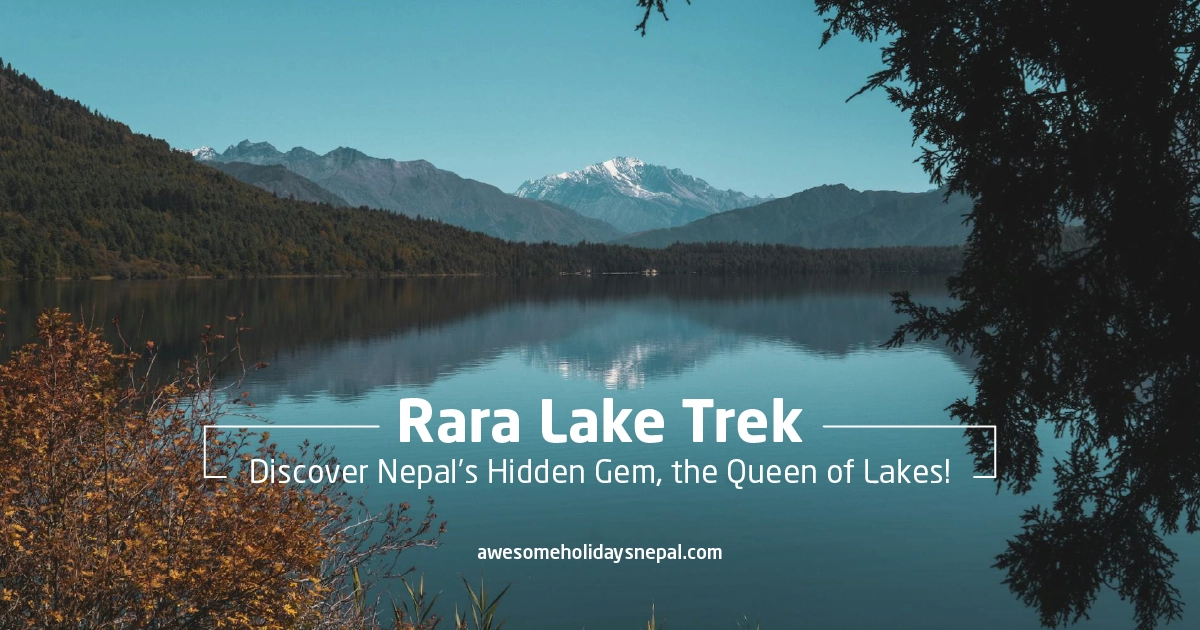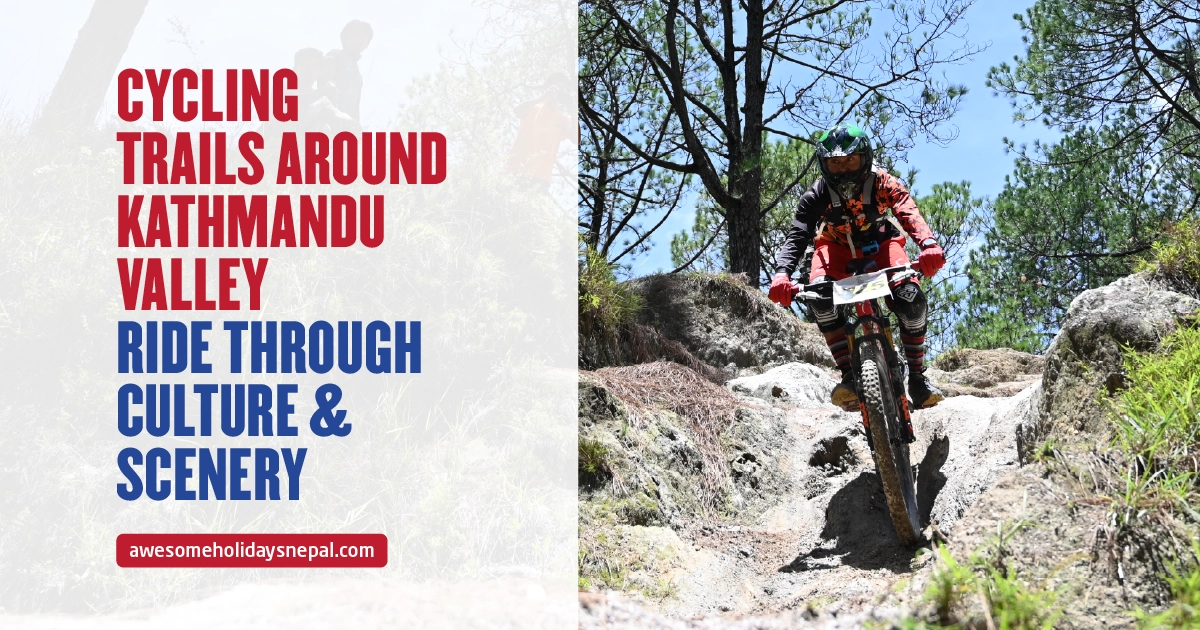Everest Trek vs Manaslu Trek: Which is Better?
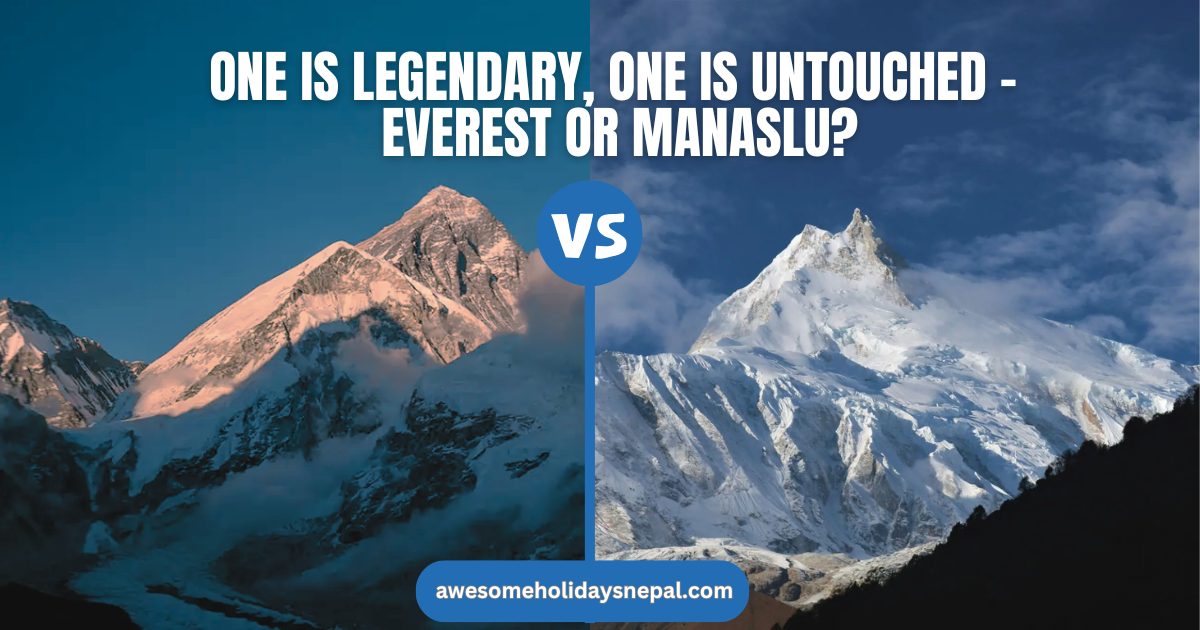
When you ask a trekker about their number one destination, you’ll get the answer as Nepal, trekker’s paradise. The beautiful country boasts to be one of the most spectacular walking trails on the planet. Likewise, the Everest Base Camp (EBC) trek and the Manaslu Circuit trek are among the most often chosen ones.
Although both of them carry you far into the Himalayas, they provide absolutely different experiences in terms of scenery, challenge, cultural immersion, and comfort. So, which trek is better? Everest Trek vs Manaslu Trek!
The answer depends on what kind of adventure you’re looking for. Let’s break it down in detail to help you decide.
In case, you want to experience The Joy of Seeing the Top of the World, do read our blog.
Everest Trek vs Manaslu Trek
Everest Base Camp Trek is renowned worldwide for its grand sights of Mount Everest (8,848m) and excellent infrastructure.
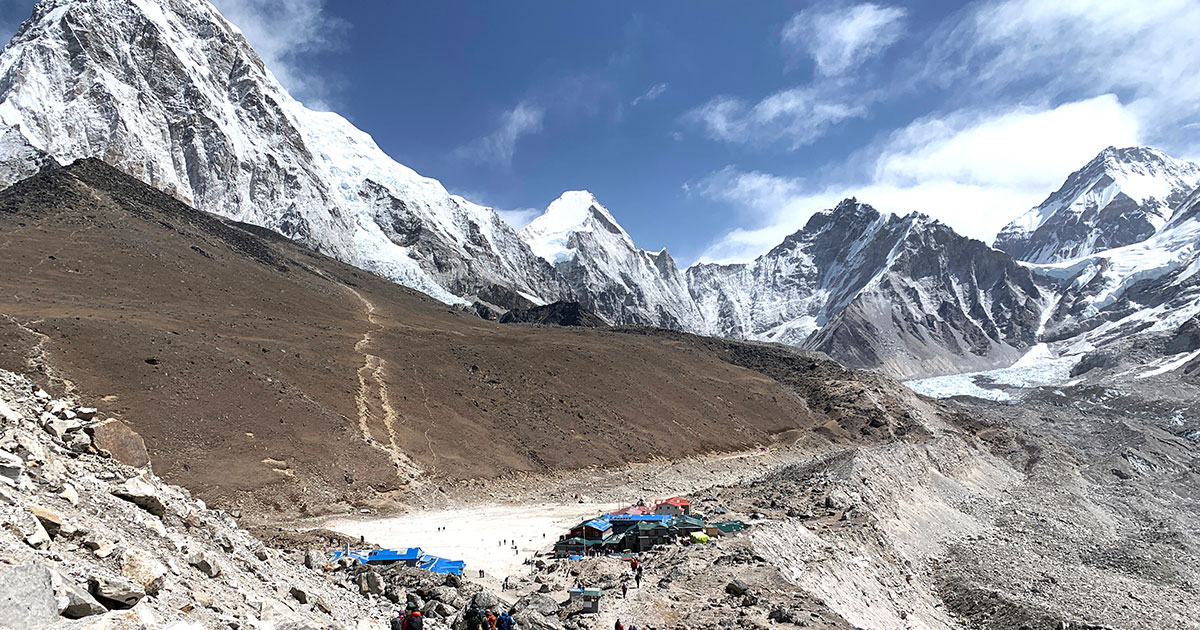
With cozy teahouses, WiFi, and even bakeries along the way, it is a dream location for hikers wanting to experience the famous Sherpa culture, well-known sights like Kala Patthar (5,545 meters), and high-altitude adventure. But its quick ascensions mean that it comes with a higher altitude sickness risk, costly accommodations, and great crowds.

On the other hand, the Manaslu Circuit trek circles Mount Manaslu (8,163m), the eighth highest peak in the world, that offers an off-the-beaten-path experience. High-altitude passes, steep gorges, and distant Tibetan-influenced hamlets are covered on this journey. More physically demanding and less developed, the path calls for travelers to cross Larkya La Pass (5,160m).
With modest accommodations and a need for mandatory guides, it provides less visitors, more genuine culture, and unspoiled natural beauty, unlike Everest. If you want to Know Everything About the Manaslu Circuit Trek, read our blog.
Everest Trek vs Manaslu Trek Comparisons
Accommodation & Food: Comfort or Simplicity?
If you value comfort and ease, the Everest route is the best one. From simple teahouses to exquisite resorts with warm covers, WiFi, and hot showers, the area offers a broad range of accommodations. Namche Bazaar (3,440m), the entrance to Everest, host bakeries, coffee shops, and even bars; farther up the lodging becomes more basic particularly in locales like Gorak Shep (5,164m), where teahouses provide only modest rooms with shared features.
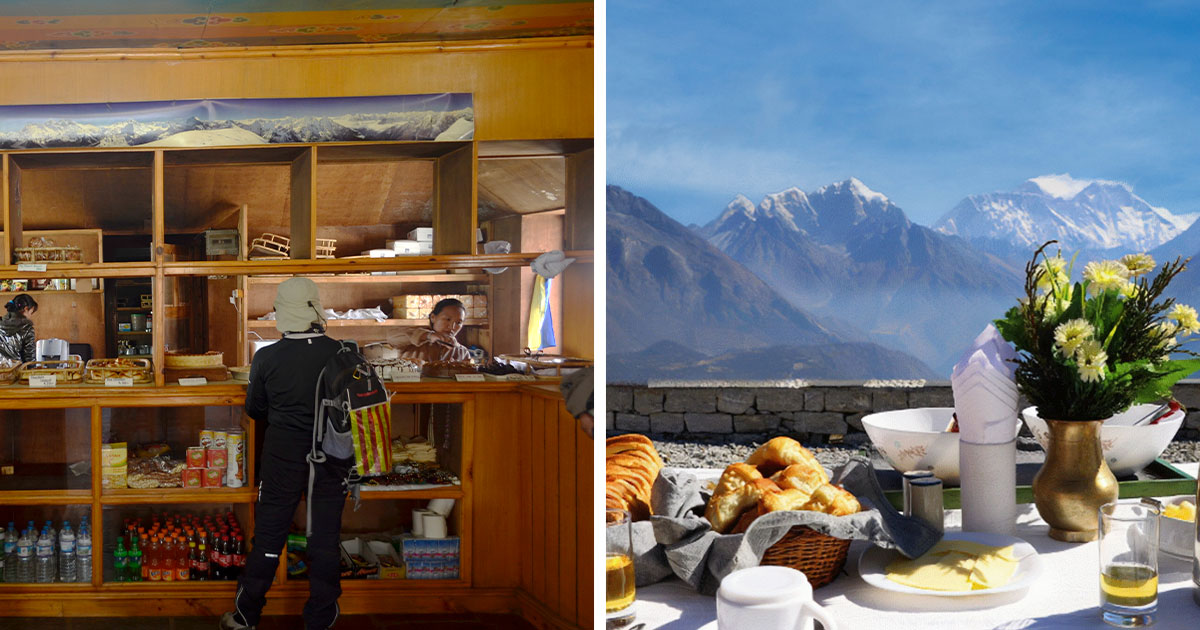
Surprisingly, you find diverse food on the Everest trek. Pancakes, pasta, momos, indeed pizza and cheeseburgers alternate with Dal Bhat (rice and lentils). Nonetheless, because of transportation issues, costs rise with elevation.
The Manaslu trek, in contrast, gives a more rustic and isolated experience. Often with communal dining halls and shared rooms, accommodations consist of simple wooden teahouses. Trekkers rest in dormitory-style guest houses with little heating in settlements like Samagaon (3,530m) and Dharamsala (4,460m). Electricity stretches thin and charging appliances carries additional cost.
Compared to Everest, the Manaslu trail offers more basic food alternatives. Dal Bhat, Tibetan bread, noodle soups, and simple curries make up the majority of the meals. Further restricted is the menu in the upper areas. Everest is preferable if you like a lot of different types of food and cushy accommodations. Manaslu is an ideal selection, however, if you are comfortable with rudimentary living conditions and want a hard trekking experience.
Landscape & Scenery: Which One is More Beautiful?
Known for their spectacular high-altitude landscape, the Everest trek. The trekkers get to pass through Sagarmatha National Park which is home to glacial rivers, iconic Sherpa settlements, and high-altitude deserts. Of course, Mount Everest is the foremost attraction in addition to other famous peaks like Ama Dablam, Lhotse, and Nuptse. Kala Patthar (5,545m) offers one of the most stunning views in the Himalayas, including a magnificent sunrise or sunset view of Everest. Still, the more you rise, the more barren and rougher the terrain becomes, lacking woods and vegetation.
Comparatively, the Manaslu trail presents a more varied and unspoiled scene. Starting in the thick subalpine forests, the journey tracks the Budhi Gandaki River across steep ravines and waterfalls. The view changes into alpine meadows, high-altitude deserts, and great ice fields as you rise. The route provides magnificent vistas of Mt. Annapurna II, Himalchuli, Ganesh Himal, and Manaslu. One of Nepal’s most spectacular high-altitude crossings is the Larkya La Pass (5,160m), so we highlight it. Unlike Everest, the Manaslu area has many more plants and a lot of different terrains, so is heaven for nature lovers.
Culture & Local Experience: Sherpa or Tibetan Influence?
Known for their mountain climbing abilities and profound Buddhist customs, the Sherpa people call the Everest region home. Along the route are prayer flags, Mani walls, and monasteries spanning centuries. One of the most important cultural highlights in the Khumbu area is the largest monastery there, Tengboche. But some communities seem to be more like trekking centers than historic homes, thanks to tourism and commercialization.
The Manaslu hike provides travelers a more genuine local experience. Tibetan-origin groups like the Nubri and Tsum people live in the area and still practice Buddhism traditionally. Samagaon and Lho are small towns with ancient stone-carved Mani walls, yak herders, and monasteries reflecting Tibet.
The fewer number of tourists in Manaslu results in more authentic and immersive cultural interactions. Manaslu is the best option if you seek thorough cultural immersion.
Difficulty & Altitude: Which Trek is Harder?
Both treks are physically demanding, but Manaslu is considered more difficult due to longer trekking days, rougher trails, and fewer facilities.
Rather than technical difficulty, the high altitude mostly defines the Everest Trek as moderate to demanding. The path is well kept, obviously marked, and offers gentle rises with numerous tea houses along the route. From Lukla (2,860m), the route rises steadily to Everest Base Camp (5,364m) and the Kala Patthar viewpoint (5,545m), providing splendid close-up views of Everest. Usually fairly ample and simple to follow, the routes simplify guidance. Even if altitude sickness is an issue, the plan offers several acclimatization stops so most hikers will find it reasonable.
By its rough and distant geography, in contrast, the Manaslu Trek is more difficult. From Soti Khola (700m), where the trek starts, it ascends to Larkya La Pass (5,160m)—one of Nepal’s highest trekking passes. The paths here are thin, steep, and sometimes prone to avalanches, in contrast to Everest.
Similarly, the river crossings over suspension and wooden bridges add an adventurous element to be sure. More rigorous is acclimatization, and since independent trekking is forbidden, a professional guide is necessary. Fewer services as a result of the distance of Manaslu therefore imply a more physically and mentally tough journey.
Accessibility & Getting There
Getting to Everest is speedier and simpler. Starting your walk, you take a 30-minute Kathmandu to Lukla flight. On the other side, flights are subject to weather and delays are frequent. Should flights be canceled, you might have to wait days or go on a long road trip instead.
From Kathmandu to Soti Khola, the Manaslu Trek opens with an extended 8–10-hour vehicle trip. The route is dusty and rough; there are no flights. Though it is quite a trip, you’ll be exempted from the uncertainty of flights cancellations
Crowds & Remoteness
Everest is one of the busiest trekking routes in Nepal, especially in peak seasons. Hundreds of trekkers, guides, and yaks pass through the trails daily. Finding solitude can be difficult, but for some, the social atmosphere is a plus.
Manaslu, in contrast, is far less crowded. Even in peak seasons, you’ll encounter fewer trekkers. If you love solitude and peaceful trekking, Manaslu is the better choice.
Trekking Permits and Restrictions
For the Everest Trek, trekkers need to get two permits: Sagarmatha National Park Entry Permit and TIMS (Trekkers’ Information Management System) Card. You can obtain the permits relatively easily and can be arranged independently or via a trekking agency like Awesome Holidays Nepal. Solo trekking is allowed, and many trekkers opt to hike without a guide.
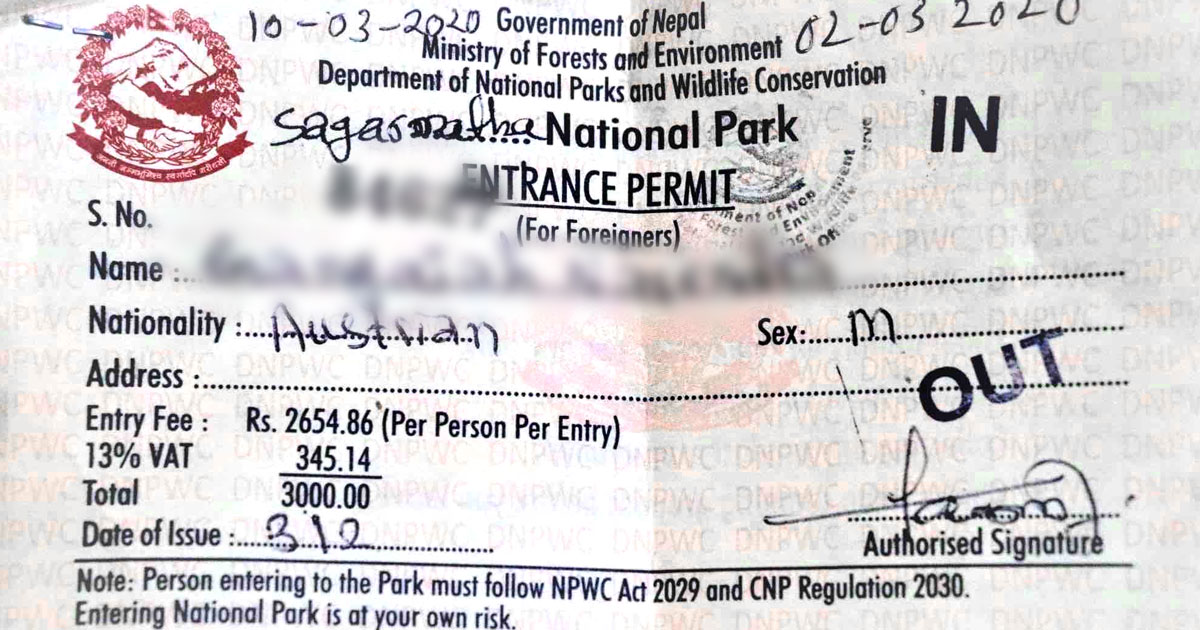
SImilarly, for the Manaslu Trek you need to acquire additional permits due to its restricted area status. You need to get Manaslu Restricted Area Permit, Annapurna Conservation Area Permit (ACAP) and Manaslu Conservation Area Permit (MCAP).
Solo trekking is not allowed in the Manaslu region, and a licensed guide and at least two trekkers are required to obtain the permit. These extra requirements make Manaslu logistically more complex to arrange compared to Everest.
Trekking Seasons and Best Time to Go
Both treks are best done in Spring (March–May) and Autumn (September–November), when the weather is stable, and the views are clear.
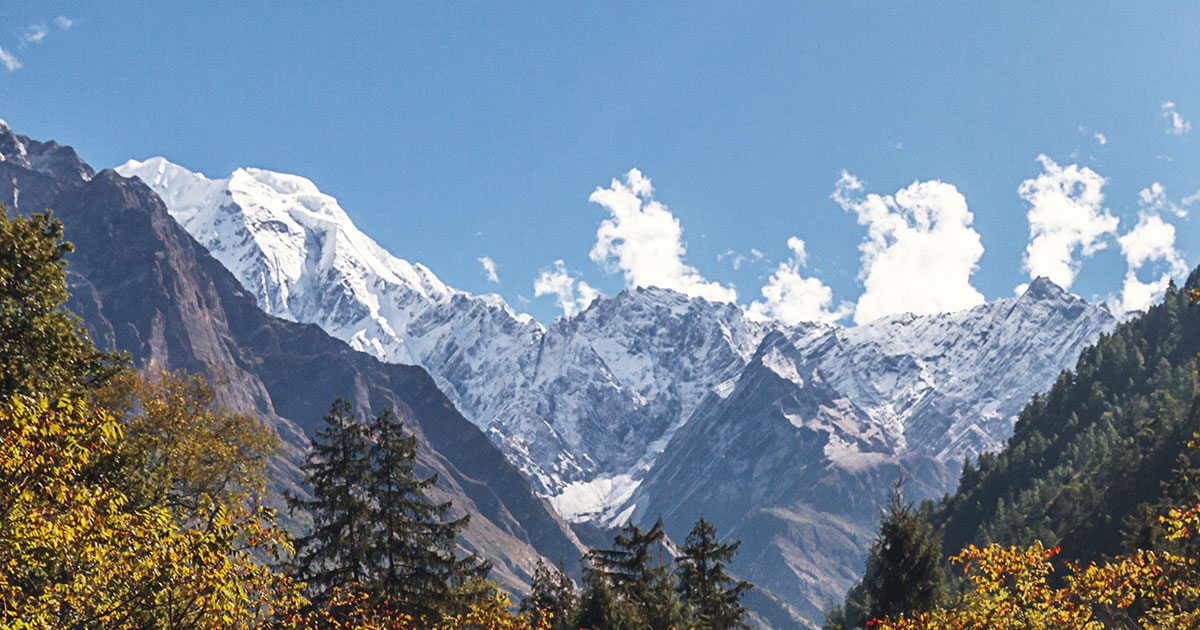
- Spring: You get to witness blooming rhododendrons and experience warmer temperatures.
- Autumn: This season offers crystal-clear mountain views and ideal trekking conditions.
The Everest Trek can be done in winter, but it is extremely cold, with temperatures dropping below -20°C at higher altitudes. The Manaslu Trek is not recommended in winter, as heavy snowfall can block the Larkya La Pass.
Cost & Budget: Which Trek is Cheaper?
The Everest trek is more expensive, costing around $1,500 – $2,000, mainly due to flights to Lukla, expensive accommodations, and food prices.
The Manaslu trek usually costs around $1,300 – $1,700 but requires a mandatory guide and special permits. However, since accommodation and food are more basic, costs tend to be lower. If you’re on a tight budget, Manaslu is slightly cheaper, but Everest offers more value in terms of comfort and accessibility.
Everest Trek vs Manaslu Trek: Conclusion
Both treks offer incredible Himalayan experiences, but the choice depends on your preferences. If you want an iconic trekking experience, modern amenities, and an easier, social trek, Everest is the better choice. If you seek a remote, challenging adventure with fewer crowds, diverse landscapes, and deep cultural immersion, Manaslu is the ideal trek.
Whichever trek you choose, both will leave you in awe of Nepal’s majestic mountains and rich cultural heritage!
FAQs
Expand AllHow long does the EBC trek take?
The Everest Base Camp trek usually takes 15 days, starting with an exhilarating flight from Kathmandu to Lukla. However, the trek duration might vary depending on your chosen route and the packages you booked.
Exploring the EBC circuit through Gokyo Lake, Gokyo-ri, and Ngozumpa Glacier might take up to 17 days, whereas including the three-pass trek in this expedition might take up to 19 days.
When is the best time to trek to Everest Base Camp?
The best time to trek to Everest Base Camp is during the Autumn and Spring seasons, as the climate is favorable, and the trekking route is rich in luscious greens. For a safe, memorable, and incredible experience, plan a trek between mid-September and November or March and June.
How long does the Manaslu Circuit trek take?
A standard Manaslu Circuit trek takes 16 days, starting from Machha Khola, and it also includes acclimatization days and stays at the area & major attractions.
When is the best time to trek to Manaslu Circuit?
The best time to trek Manaslu Circuit is during the Autumn and Spring seasons, as the climate is favorable and the trekking route is rich in luscious greens. For a safe, memorable, and awesome experience, plan a trek between mid-September and November or March and June. However, the trek is possible all around the year. As long as you can avoid rainstorms and sustain extreme temperatures, you can ascend during colder months to avoid the crowd.
What permits are required for Manaslu Circuit Trek?
To explore the Manaslu circuit, you will require three different permits along with the TIMS permit. While the Manaslu Conservation Area permit and Annapurna Conservation Area permit are necessary for every trekker, Nepali citizens do not require the Manaslu Restricted Area permit. Additionally, you must acquire a Tsum Valley Restricted Area permit to visit the valley.
What permits are required for Everest Base Camp Trek?
You will require two passes, the Sagarmatha National Park Entry Permit and the Khumbu Pasang Lhamu Municipality Entry Permit to trek through the Everest region. Apart from these, you can get the optional Gaurishankar Conservation Area permit if you hike from Jiro to Everest.
These passes can be obtained easily from the Tourism Board of Nepal or from the Lukla or Monjo check post if you are already in Lukla.
What kind of accommodation is available in Everest Base Camp Trek?
While you have the option of standard, three-star, and five-star accommodation in Kathmandu, the options might be restricted on the trekking route. You will most likely find tea houses with clean rooms along the route. However, some major stops along the route, like Namche, Lukla, Phakding, Deboche, and Thame, do have luxury lodges that provide all amenities.
And yes, it is possible to get private rooms or rooms with attached bathrooms, but you will have to pay an extra charge.
Which trek has a higher risk of altitude sickness?
Both treks reach elevations above 5,000m, so altitude sickness is a risk. However, Everest Base Camp has quicker ascents, increasing the risk slightly more.
Which trek is better for beginners?
Everest Base Camp trek is a better option for beginners as it has well-marked trails, plenty of teahouses, and multiple acclimatization days. While the Manaslu trek demands more trekking days, rougher terrain, and river crossings so, it is suitable for experienced trekkers.
What is the best time for these treks?
Both treks are best done in Spring (March to May) and Autumn (September to November) when the weather is stable, and the views are clear.
Related blog posts
Discover a choice of tourist destinations loved by most of our visitors. Whether you're on a jungle safari to spot rare animals or walking through a world heritage site, these well-planned itineraries cover the major highlights of Nepal.


